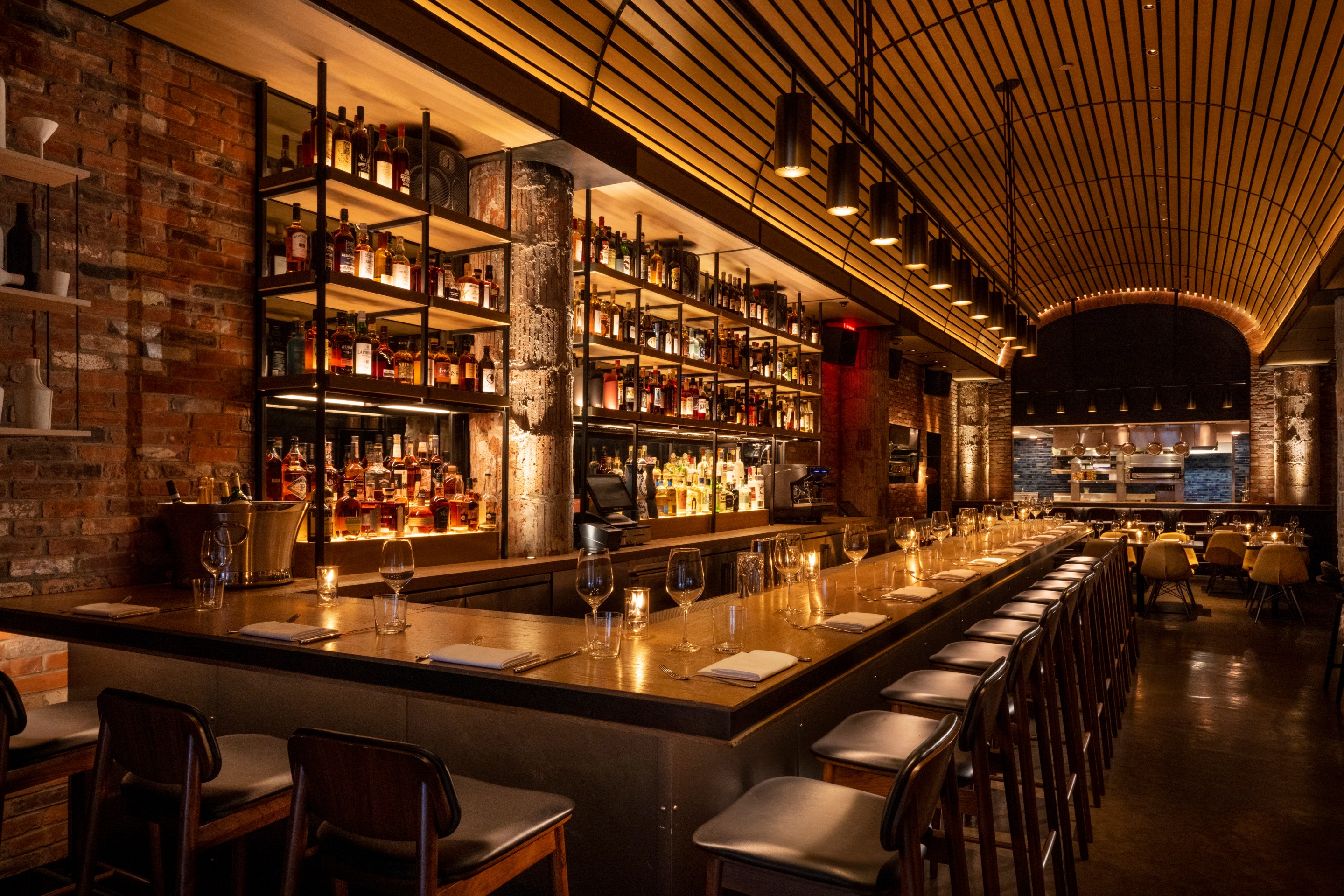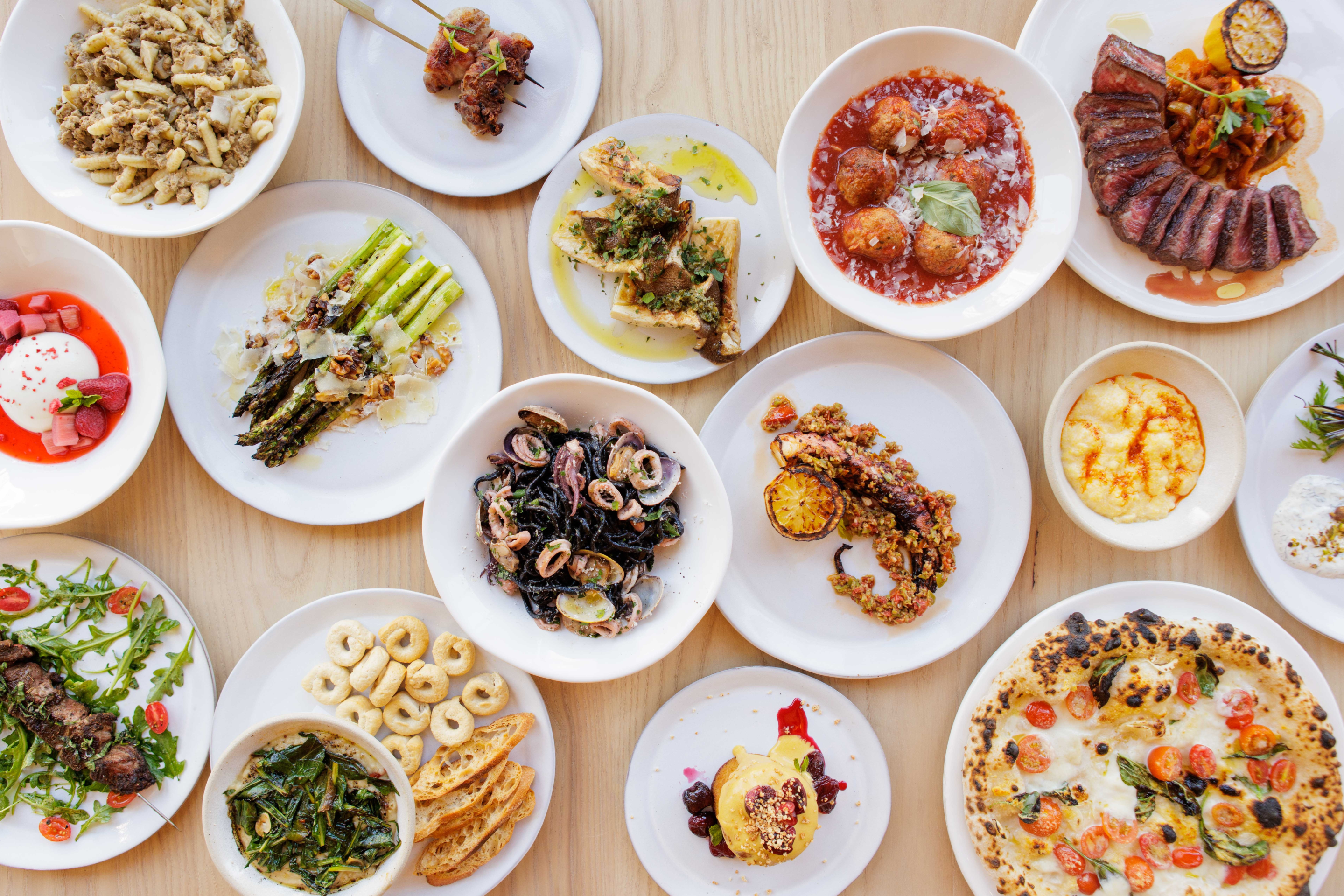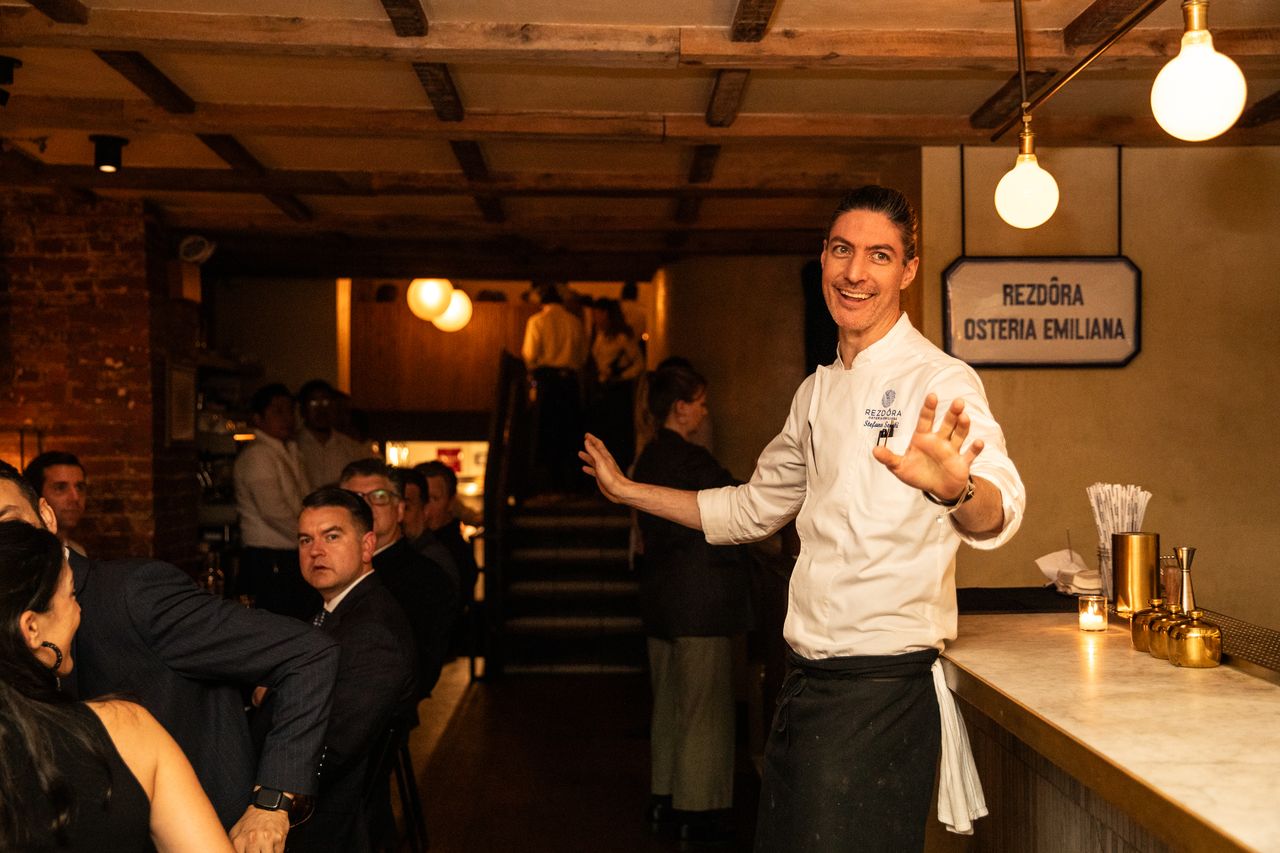One night this spring, after an exceptional meal of rigatoni carbonara and bone-in veal parmigiana, the waiter at Carlotto handed me and my dining companion an amaro list with more than 100 options. The high quality of the cooking at this slightly under-the-radar Italian restaurant had surprised me; the depth of this list devoted to Italian spirits was a shock.
Why would the somewhat glitzy Carlotto (designed by the Rockwell Group), an adjacent offshoot of the seafood-centric Oceans just across from Union Square Café, devote so much bar space to what is essentially a niche and mysterious alcoholic product whose name translates literally as “bitter”?
In his 2016 book Amaro, author and expert Brad Thomas Parsons notes that there are many ways to approach or consider it, but that “Generally speaking, amaro refers to the collective class of Italian-made aromatic, herbal, bittersweet liqueurs traditionally served as a digestif after a meal.”
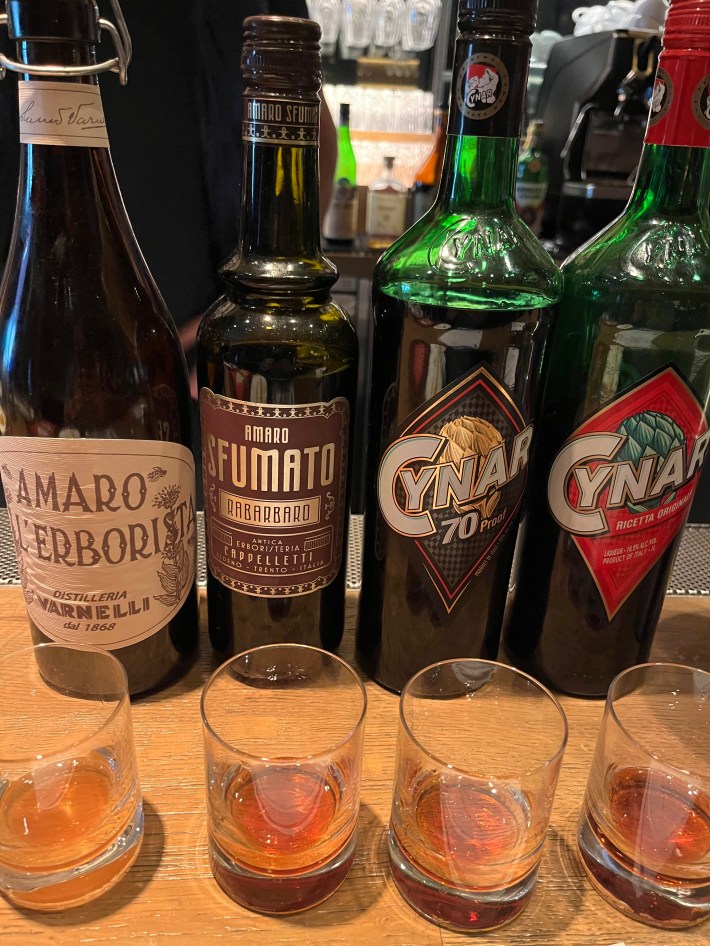
Amaro is also used as a flavor-packed addition to cocktails—Parsons’ book features dozens of recipes—and a few bottles can be found on the bar shelves at most Italian restaurants. New York City has what is considered this country’s first bar dedicated to Italian bitters, Amor y Amargo, a mile south of Carlotto in the East Village, and the amaro category does seem to be growing along with the rise of Italian cocktail culture and the popularity of the Negroni (and its variations), espresso martini, spritzes, and others.
Yet I wouldn’t expect a restaurant like Carlotto, which is part of the Toptable Group from Vancouver, British Columbia, to devote so much bar space to amaro. Credit David Schneider, a veteran in hospitality operations, with championing amaro at Carlotto. He worked at several high-profile Italian restaurants before joining Toptable to open Oceans in 2018, including Portale and Ai Fiori, the formerly Michelin-starred spot near the Empire State Building.
When I meet Schneider at Carlotto for an amaro taste test he organized for me a few months after my first visit, he explains that he knew that he had to build out “a serious beverage program” to match Oceans. The seafood restaurant has an extensive wine list and bar program spotlighting whiskey. At Carlotto, he says, “I figured, beyond just having great Italian wines to offer, let's build out a really world-class amaro program. Why not?”
Schneider made calls to friends from his past positions, including one who’d relocated back to Italy, and began ordering new bottles of amaro, as well as vintage bottles.
“About 12 months before we even opened our doors. I started that process of getting like, eight bottles here, 10 bottles there and just slowly building it,” he says of the program.
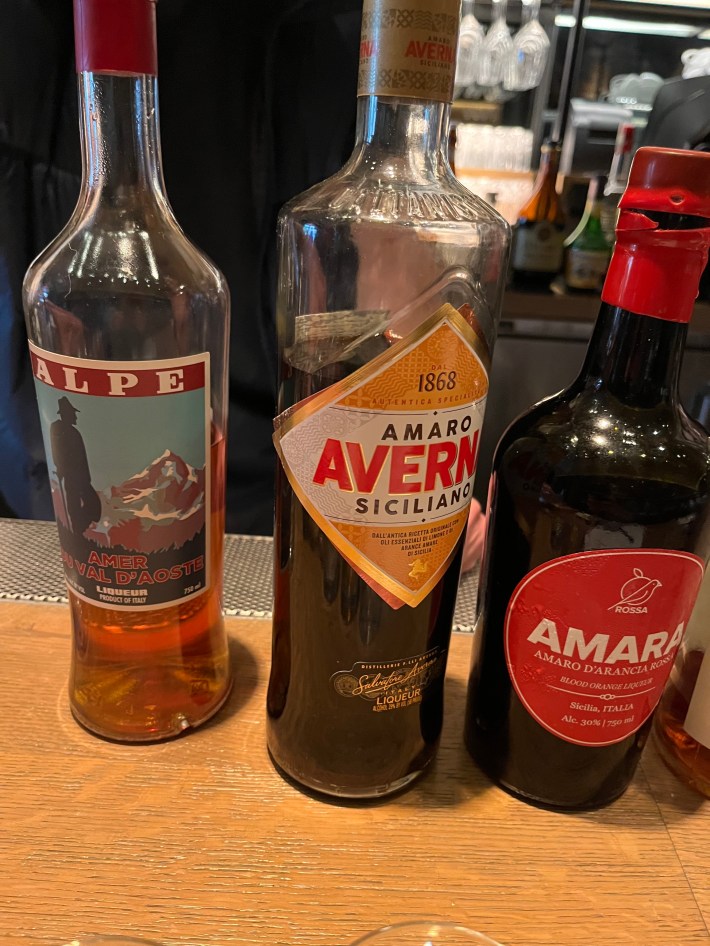
He adds that he wanted to “create a scenario where you could bookend the guest dining experience with killer Italian wine options to start off the meal but then also allow [guests] this opportunity to finish out with something really strong.”
To create our taste test, Schneider grouped bottles of amaro by category, starting with a wine-based amaro and lighter versions of the liqueur from Sicily, then proceeding to alpine varieties and amari made with artichoke and rhubarb, and finally some deeply flavored fernets and vintage pours.
In all, we tasted 16 bottles in groups of three or four, a fantastic way to grasp the range of these bitter spirits. I’ll list them below with tasting notes from Schneider, which I found to be accurate, and some of my own.
I asked Schneider how other guests react when they’re handed a list with 100 amari on it. He proudly mentions that the list is provided along with the dessert menu, which often piques their curiosity. “We highlight the fact that we have it and let the guests know which page to turn to and dive into it. We’re happy to start the conversation with them.”
For those who are unaware of amaro’s existence, he may start them with Lucano, a lightly colored, mildly sweet liqueur, which he calls “a very kind of straightforward fastball down the middle type of amaro. This is a good starting point.” From there, he’ll ask, “Do you want to go more bitter, sweeter, more herbal, more citrus?” he says. “It's right there in the middle. So I think it's a good place to go to start the conversation.”
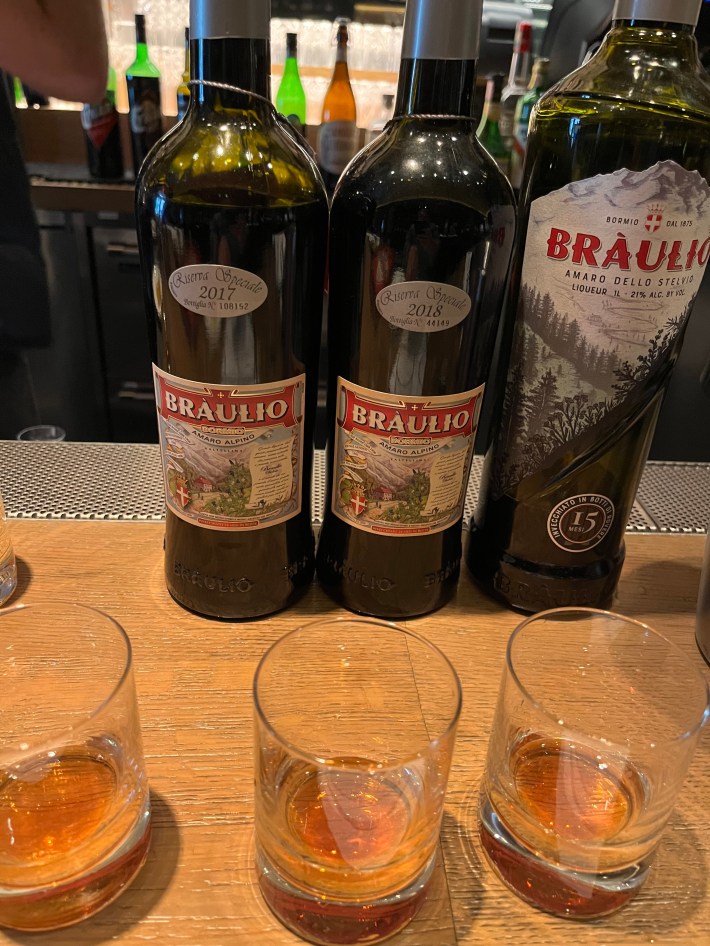
Our conversation started not with Lucano but with Cardamaro Vino Amaro from Piedmont, and continued from there. I can’t guarantee that Schneider and his team at Carlotto will offer the same comprehensive taste test as the one I received, but I do recommend the restaurant experience as a whole. Executive Chef Andy Kitko’s kitchen provides a culinary trip through Italy’s beloved food regions, while Schneider and his team can provide guidance through the sprawling, Italian-leaning wine list and, of course, recommend an amaro to finish your meal.
Here’s the tasting list and notes, with the amaro listed first, followed by its place of origin. Amaro’s flavors often reflect where it’s made, as the amaro makers macerate local herbs and roots as part of the process of making the liqueur.
- Cardamaro Vino Amaro, Piedmont. A Moscato (wine) base with 17% ABV, light caramel color, sweet, herbal bitterness with hints of citrus. Great over ice as an aperitivo.
- Amara, Sicily. 30% ABV, bitter orange, amber, citrus, spice, slightly bitter. Carlotto uses this amaro as an ingredient in its white Negroni.
- Averna, Sicily. 29% ABV, citrus, vanilla, and orange notes, with soft bitterness and a cola-like consistency.
- Alpe, Val d’Aoste. 38% ABV. A classic alpine amaro with gentian, local herbs, mintiness and mild bitterness.
- Braulio, Valtellina, Lombardy. 21% ABV. An Alpine-style amaro aged for two years in Slovenian oak, with an earthy, musty, juniper-forward flavor. It’s dark brown and aromatic. Part of the Campari portfolio.
- Braulio Riserva Especiale 2017 and 2018. These are vintages from Braulio. The 2017 has a more bitter, Alpine flavor profile, rich and herbal, while the 2018 has a slightly sweeter taste and a hint of balsamic vinegar.
- Cynar, Lombardy. 16.5% ABV. This amaro from the Campari Group is known for its strong flavor and inclusion of artichoke in its ingredient list. It’s dark, vegetal, and has a sweet caramel finish. Works great in a spritz.
- Cynar 70, 35% ABV. A higher-octane amaro for cocktails or maybe shots, for those looking for a Jägermeister alternative.
- Sfumato, Trentino, Alto Adige. 20% ABV. Known to amaro enthusiasts for its inclusion of Chinese rhubarb, it has a smoky, woodsy profile, and is best when mixed into a cocktail (though it can be sipped neat or on a rock or two).
- Montenegro, Emilia-Romagna. 23% ABV. A well-known bottle from one of the best Italian culinary regions, this amaro starts with notes of orange peel and unfolds on the palate with floral and slight vegetal flavors. Lightly sweet and mildly bitter.
- Fernet Branca, Lombardy. 39% ABV. High-octane, very bitter, chamomile. Schneider notes that it was allowed in the U.S. during Prohibition for its medicinal purposes. A favorite of bartenders, author Brad Thomas Parsons writes that this is “one of Italy’s most iconic amari.”
- Amaro dell’Erborista, Marche. 21% ABV. This unfiltered amaro with a flip cap is made by a woman-run distillery. It has floral and coffee notes, with hints of tobacco.
- Fred Jerbis Single Barrel Unfiltered Fernet, Friuli. 28% ABV. Unlike the more familiar Fernet-Branca, this version of fernet is low in sugar and smoother-drinking, while retaining a bracing bitterness and mixing in strong vegetal and herbaceous flavors.
- Amaro del ‘Piave,’ Bologna. 21% ABV. This and the following two amari are from Carlotto’s vintage collection. This herbaceous amaro drinks like an alcoholic version of cola, with caramel color and light sweetness.
- Pedrocchino, Veneto. 35% ABV. A medicinal, minty Alpine amaro.
- Monier, Lombardy. 29% ABV. Bitter meets sour in this amaro, which has sugarcane notes reminiscent of rum.
